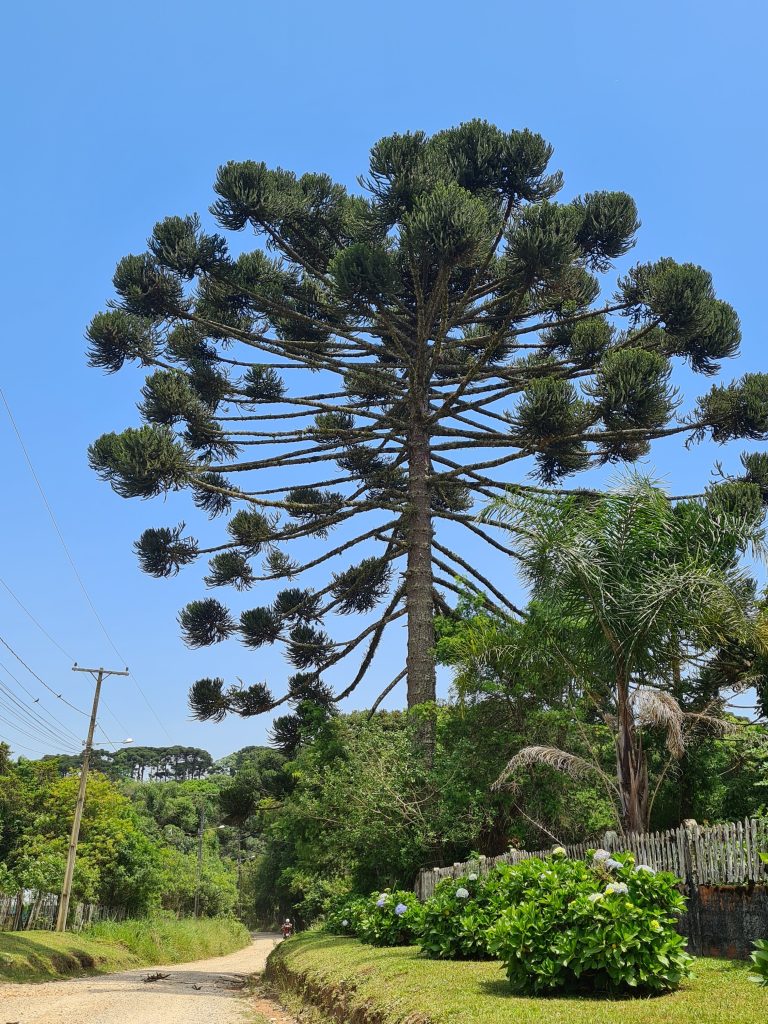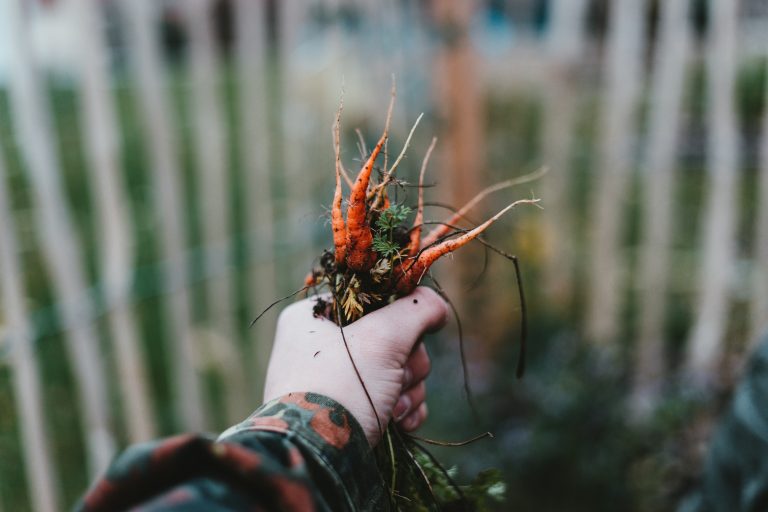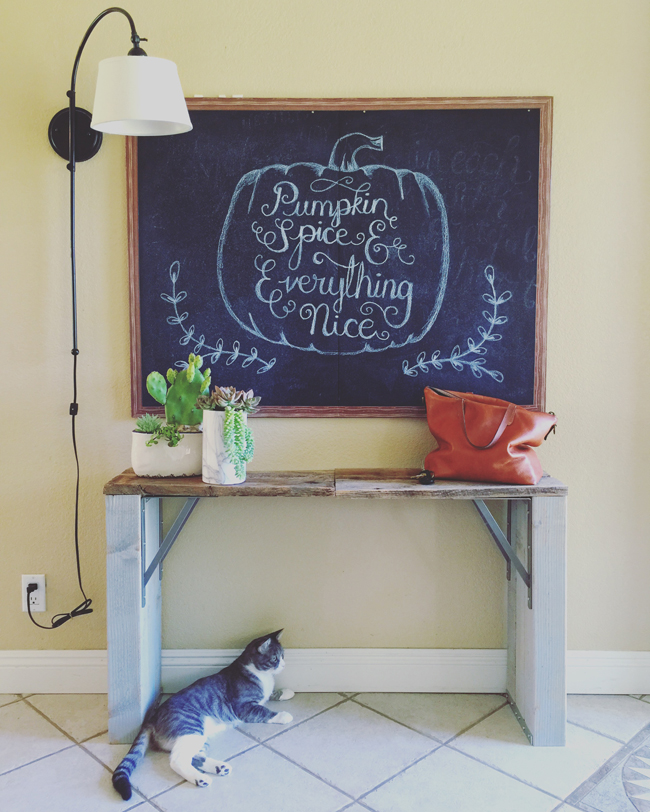Do you have a green thumb but want to take your gardening to the next level by making it more sustainable? Look no further! In this article, we will explore some valuable tips that can help you create an eco-friendly and sustainable garden. From conserving water to attracting beneficial insects, these tips will not only minimize your environmental impact but also enhance the health and vitality of your plants. So, get ready to dig in and discover how you can nurture your garden while nurturing the planet!
Table of Contents
ToggleChoosing the Right Plants
Select Native Species
When it comes to sustainable gardening, one of the first steps you can take is to choose native species for your garden. Native plants are well-suited to the local climate and soil conditions, which means they will require less water, fertilizer, and maintenance compared to non-native species. By selecting native plants, you not only help conserve water and reduce the need for chemical inputs but also provide essential habitat and food sources for local wildlife. So, before you start planting, do some research on the native plants that thrive in your region and include them in your garden.
Use Perennials
Another important aspect of sustainable gardening is to incorporate perennials into your garden design. Unlike annuals, perennials live for several years, which means less time, effort, and resources are needed to replant them every season. By choosing perennials, you can enjoy the beauty and benefits of these plants year after year, while minimizing the need for constant replanting. Additionally, perennials often have deep root systems that help improve soil health, prevent erosion, and increase water infiltration, making them an excellent choice for sustainable gardening.
Practice Companion Planting
Companion planting is a sustainable gardening technique where different plant species are grown together to provide mutual benefits. By carefully selecting companion plants, you can create a more biodiverse and resilient garden ecosystem. Some plants, for example, repel pests that may attack others, while others attract beneficial insects that help with pollination and pest control. Additionally, certain plants can enhance soil fertility by fixing nitrogen or providing shade to help conserve moisture. By incorporating companion planting into your garden, you can maximize plant health, reduce the need for chemical interventions, and promote a balanced and sustainable ecosystem.
Conserving Water
Install Water-Saving Systems
Water conservation is a vital aspect of sustainable gardening, especially in regions prone to drought or with limited water resources. One effective way to conserve water is by implementing water-saving systems in your garden. These systems can range from simple solutions like installing rain barrels to collect and store rainwater for later use, to more sophisticated methods such as drip irrigation or graywater recycling systems. By utilizing these water-saving systems, you can minimize water waste, reduce your reliance on municipal water supplies, and create a more sustainable and self-sufficient garden.
Mulch the Soil
Mulching is a great technique for conserving water in your garden. By applying a layer of organic mulch on the soil surface, you can help reduce evaporation, retain moisture, and suppress weed growth. Mulch acts as a protective barrier, shielding the soil from the sun’s direct rays, and regulating soil temperature. Organic materials like wood chips, straw, or compost make excellent mulch options, as they not only conserve water but also provide additional nutrients to the soil as they decompose. So, remember to mulch your garden beds to conserve moisture and promote a healthy and sustainable garden environment.
Water Smartly
When it comes to watering your garden sustainably, it’s important to do so intelligently. Instead of following a fixed watering schedule, adjust your watering routine based on the specific needs of your plants and the local weather conditions. Overwatering can lead to water waste, nutrient leaching, and increased susceptibility to diseases, while underwatering can stress plants and hinder their growth. Watering deeply but infrequently, preferably in the early morning or late afternoon, allows the water to penetrate the root zone effectively and minimizes evaporation. Additionally, consider utilizing techniques like drip irrigation or soaker hoses to deliver water directly to the plant’s roots, avoiding unnecessary water loss and promoting healthier plant growth.
Soil Management
Test and Amend the Soil
Soil health is the foundation of a successful and sustainable garden. Before planting, it’s essential to test your soil to determine its fertility levels and pH. Soil testing kits or professional laboratories can provide valuable insights into your soil’s composition and nutrient content. Based on the test results, you can then amend your soil with organic matter, such as compost, aged manure, or cover crops, to improve its structure, fertility, and drainage. Amending your soil not only helps plants grow better but also promotes beneficial microbial activity, enhances water retention, and reduces the need for synthetic fertilizers. So, make soil testing and amendment a regular part of your sustainable gardening practices.
Practice Crop Rotation
Crop rotation is a time-tested technique that helps manage soil fertility and prevent the buildup of pests and diseases. To practice crop rotation, simply avoid planting the same crop or plant family in the same area of your garden year after year. By rotating crops, you disrupt pest and disease cycles, as different plants have varying vulnerabilities and pest preferences. Additionally, crop rotation allows each plant to access different nutrients, reducing the need for excessive fertilization and promoting more balanced soil health. So, plan your garden layout carefully, ensuring that you change the location of different crops annually to maintain soil fertility and minimize pest pressures.
Compost Regularly
Composting is a sustainable way to recycle and enrich organic waste material, such as kitchen scraps, yard trimmings, and fallen leaves, into nutrient-rich compost. By regularly composting, you not only divert waste from landfills but also create a valuable soil amendment for your garden. Compost improves soil structure, enhances nutrient availability, and promotes beneficial microbial activity, all of which are key factors in maintaining a thriving and sustainable garden ecosystem. So, start a composting system in your garden and let nature’s recycling process work its magic.
Pest Control
Encourage Natural Predators
One of the most effective and eco-friendly ways to control pests in your garden is by encouraging natural predators. Ladybugs, lacewings, spiders, and birds are just a few examples of beneficial organisms that feed on garden pests, helping keep their populations in check. To attract these predators, provide them with suitable habitats such as native plants, water sources, and sheltered areas. Additionally, avoid using broad-spectrum pesticides, as they can harm beneficial insects along with the pests. By creating an inviting environment for natural predators, you can maintain a balanced ecosystem and reduce the need for chemical pest control methods.
Use Organic Pest Control Methods
When prevention and natural predators alone can’t fully manage pest issues, try employing organic pest control methods as an alternative to synthetic chemical pesticides. Organic pest control typically involves using environmentally friendly techniques such as insecticidal soaps, horticultural oils, neem oil, or homemade remedies like garlic or chili pepper sprays. These methods target specific pests while minimizing harm to beneficial organisms and reducing chemical residues in your garden. It’s important to note that organic pest control may require more patience and persistence compared to conventional methods, but the long-term benefits to your garden’s health and sustainability make it well worth the effort.
Practice Integrated Pest Management
Integrated Pest Management (IPM) is a holistic and sustainable approach to pest control that combines different strategies to manage pests effectively. IPM involves identifying and monitoring pest populations, implementing preventive measures, utilizing natural predators, trapping or physically removing pests when necessary, and resorting to targeted pesticide applications only as a last resort. By using IPM techniques, you can minimize the use of chemicals and achieve long-term pest control while reducing the impact on beneficial insects and the overall garden ecosystem. So, embrace IPM as a sustainable alternative to reactive pest control methods.
Energy Consumption
Optimize Sunlight Exposure
Maximizing sunlight exposure is essential for sustainable gardening, as it reduces the need for artificial lighting and promotes healthy plant growth. When planning your garden layout, consider the natural light patterns in your landscape and position your plants accordingly. Place sun-loving plants in areas with the most sun exposure, while shade-tolerant plants can thrive in spots with less direct sunlight. Additionally, avoid planting tall or shade-producing plants where they may cast shadows on sun-loving crops. By optimizing natural sunlight in your garden, you can reduce energy consumption and create a more sustainable growing environment.
Utilize Energy-Efficient Tools
Gardening often involves the use of various tools and equipment, and opting for energy-efficient options can significantly reduce your environmental footprint. Look for gardening tools that are battery-powered or run on renewable energy rather than relying on fossil fuels. Electric or battery-powered lawnmowers, trimmers, and leaf blowers are excellent alternatives to their gas-powered counterparts. Additionally, consider investing in energy-efficient outdoor lighting options such as solar-powered garden lights. By utilizing energy-efficient tools, you can minimize your energy consumption and contribute to a more sustainable gardening practice.
Minimize Artificial Lighting
While optimizing natural sunlight is crucial, there may be times when supplemental lighting is necessary, especially for indoor or greenhouse gardening. In such cases, aim to minimize the use of artificial lighting by selecting energy-efficient bulbs, such as LED or CFL lights. These lights consume less energy and have a longer lifespan compared to traditional incandescent bulbs. Additionally, use timers or sensors to ensure that lights are only on when needed, saving energy and reducing unnecessary lighting. By minimizing artificial lighting, you can reduce your energy consumption and make your gardening practices more sustainable.
Waste Reduction and Recycling
Reduce Single-Use Plastics
Reducing single-use plastics is an essential step towards creating a more sustainable garden. Plastic pots, trays, and packaging materials often end up in landfills, contributing to environmental pollution and causing long-term harm to our ecosystems. To reduce plastic waste, consider alternatives such as biodegradable or fabric pots, which can be reused or composted. Opt for bulk quantities or refillable containers for fertilizers, compost, or other gardening products to minimize packaging waste. Additionally, avoid using plastic mulch in your garden, as it can be difficult to recycle. By reducing single-use plastics, you can take a significant stride towards a more eco-friendly and sustainable gardening practice.
Reuse and Repurpose Materials
Instead of discarding materials and buying new ones, embrace the concept of reuse and repurpose in your garden. Many everyday items, such as buckets, containers, or even old furniture, can find a second life as planters or garden decorations. Repurposing old fencing or wood scraps for raised beds or garden borders is another sustainable way to reduce waste. Additionally, consider composting kitchen scraps and yard waste to create nutrient-rich compost that can be reused in your garden. By reusing and repurposing materials, you not only reduce waste but also save money and engage in a more sustainable gardening approach.
Implement Composting Systems
Composting is not only beneficial for soil health, but it also helps reduce waste that would otherwise end up in landfills. Implementing a composting system in your garden allows you to recycle organic materials such as kitchen scraps, coffee grounds, or yard waste into nutrient-rich compost. Compost bins or piles can be easily set up in your garden, providing a convenient way to dispose of organic waste while producing a valuable soil amendment. By composting regularly, you create a closed-loop system where organic materials are reused and returned to the soil, promoting a sustainable and regenerative gardening practice.
Creating Wildlife-Friendly Habitat
Provide Food and Water Sources
To create a wildlife-friendly garden, it’s important to provide food and water sources for local fauna. Planting native flowers that produce nectar-rich blooms throughout the year can attract pollinators like bees, butterflies, and hummingbirds, while berry-producing shrubs or trees can provide food for birds and other wildlife. Additionally, consider setting up bird feeders or providing birdbaths and small ponds to offer water sources for birds and other creatures. By offering a diverse range of food and water sources, you can encourage biodiversity and create a thriving ecosystem in your garden.
Plant Native Flowers
Planting native flowers not only adds beauty to your garden but also plays a crucial role in supporting the local ecosystem. Native flowers provide essential food and habitat for local pollinators, birds, and other wildlife. By attracting pollinators, native flowers aid in the reproduction of many plant species, ensuring a healthy and biodiverse garden ecosystem. When selecting native flowers, consider the bloom times and choose a variety of plants that provide nectar and pollen throughout the year. By incorporating native flowers in your garden, you contribute to the preservation of local wildlife and create a sustainable habitat.
Build Nesting Boxes and Shelters
Providing nesting boxes and shelters can greatly enhance the habitat value of your garden and attract a variety of wildlife. Birdhouses, bat boxes, and insect hotels are excellent options for offering safe and secure nesting sites for birds, bats, and beneficial insects. These structures mimic natural habitats that may be scarce in urban or suburban areas and provide shelter during nesting seasons. By welcoming these creatures into your garden, you promote a balanced ecosystem, as they assist in pest control, pollination, and seed dispersal. So, consider installing nesting boxes and shelters to maximize the wildlife-friendly potential of your garden.
Maintaining Biodiversity
Avoid Chemical Fertilizers and Pesticides
Maintaining biodiversity in your garden often involves avoiding the use of chemical fertilizers and pesticides. Chemical inputs can disrupt the natural balance of your garden ecosystem and harm beneficial organisms, including pollinators and soil-dwelling organisms. Instead of synthetic fertilizers, opt for organic alternatives like compost, aged manure, or organic fertilizer blends. For pest control, embrace natural methods such as biological controls, trap crops, or physical barriers. By reducing the use of chemicals, you foster a healthier and more diverse garden environment, supporting the long-term sustainability of your plants and the wildlife that depends on them.
Seed Saving and Exchange
Seed saving and exchange is a sustainable practice that promotes biodiversity and preserves heirloom and locally adapted plant varieties. Instead of relying solely on commercially available seeds, save seeds from your garden or participate in seed exchange programs with other gardeners. This way, you can grow a variety of plants with unique characteristics and allow biodiversity to thrive. Seed saving not only reduces the reliance on large seed companies but also helps maintain genetic diversity and adaptability in plant species over time. By engaging in seed saving and exchange, you actively contribute to the preservation and expansion of biodiversity in your garden.
Plant a Variety of Crops
Planting a diverse range of crops is a key strategy for maintaining biodiversity in your garden. Monoculture, or the practice of growing a single crop, can be detrimental to the ecosystem by depleting soil nutrients, attracting specific pests, and increasing the risk of disease outbreaks. By planting a variety of crops, you create a more resilient and sustainable garden environment. Different crops attract different pollinators and pests, which helps maintain balance in the ecosystem. Additionally, diverse plant species can improve soil health, enhance nutrient cycling, and reduce the need for synthetic inputs. So, embrace plant diversity in your garden and reap the benefits of a thriving and sustainable ecosystem.
Organic Gardening Practices
Use Organic Fertilizers
Opting for organic fertilizers is an essential practice in organic gardening. Organic fertilizers, such as compost, aged manure, or natural amendments like bone meal or seaweed extract, provide plants with essential nutrients without the use of synthetic chemicals. These organic alternatives not only nourish plants but also enhance soil health, promote microbial activity, and improve overall plant resilience. By utilizing organic fertilizers, you can cultivate a healthy and sustainable garden, free from the negative impacts of synthetic fertilizers on soil and water quality.
Avoid Synthetic Chemicals
In line with organic fertilizers, avoiding synthetic chemicals is central to organic gardening practices. Synthetic pesticides, herbicides, and fungicides can harm beneficial insects, contaminate water sources, and disrupt the natural balance of your garden ecosystem. Instead, focus on preventive measures like crop rotation, companion planting, and physical barriers to manage pests. For weed control, hand-weeding, mulching, or using organic herbicides made from natural ingredients can be effective alternatives to synthetic chemicals. By avoiding synthetic chemicals, you protect your garden’s health, support biodiversity, and minimize environmental impacts.
Adopt Natural Weed Control Methods
Weed management is an ongoing task in any garden, and adopting natural weed control methods is an important aspect of organic gardening. Mechanical methods like hand-weeding, using hoe or cultivator, or employing mulching techniques can effectively suppress weed growth without the use of herbicides. Mulching with organic materials like straw, wood chips, or cardboard creates a barrier that prevents weed seeds from germinating and blocks sunlight, hindering weed growth. Additionally, practicing good sanitation by removing weed debris and maintaining healthy soil can help minimize weed infestations. By opting for natural weed control methods, you can maintain a weed-free garden without resorting to harmful chemicals.
Community Gardening
Collaborate with Fellow Gardeners
Community gardening is a rewarding way to engage with fellow gardeners and build a strong and supportive community. By collaborating with others, you can share ideas, knowledge, and resources related to sustainable gardening practices. Working together, you can pool resources to purchase tools or seeds in bulk, collectively compost organic waste, or organize group projects such as building raised beds or compost bins. Additionally, community gardens often foster a sense of shared responsibility and help spread awareness about the importance of sustainable gardening in the larger community. So, reach out to fellow gardeners, join local gardening groups, and embrace the power of community in your sustainable gardening journey.
Share Resources and Knowledge
In a community garden setting, sharing resources and knowledge is at the core of collaboration and sustainability. Each gardener brings their unique experiences and expertise, which can be shared with others to enhance gardening practices. By sharing resources like tools or equipment, seeds or cuttings, or even excess produce, you reduce waste and promote a more sustainable use of resources. Additionally, organizing workshops or educational sessions where gardeners can exchange knowledge and learn from experts furthers the goal of sustainable gardening throughout the community. So, be open to sharing resources and knowledge, and be willing to learn from others in your community garden.
Engage in Urban Gardening
Urban gardening is a form of community gardening that focuses on utilizing small urban spaces to grow plants and create green oases amidst the concrete jungle. By engaging in urban gardening, you not only beautify your surroundings but also contribute to cleaner air, reduced energy consumption, and improved urban biodiversity. Balconies, rooftop gardens, or even community plots can offer opportunities for urban gardening. Containers, vertical gardens, or raised beds can maximize space utilization and make gardening accessible to urban dwellers. By embracing urban gardening, you actively participate in sustainable practices that can transform cities into greener, healthier, and more self-sufficient environments.
In conclusion, sustainable gardening involves a holistic approach that encompasses a variety of practices. From selecting the right plants and conserving water to managing soil health and reducing waste, each aspect plays a vital role in creating a sustainable and thriving garden. By incorporating these sustainable gardening tips into your own practice, you can contribute to a healthier environment, support local wildlife, and enjoy the beauty and abundance of a sustainable garden. So, start implementing these strategies in your gardening journey and remember that every small step towards sustainability makes a significant impact in the long run. Happy gardening!









